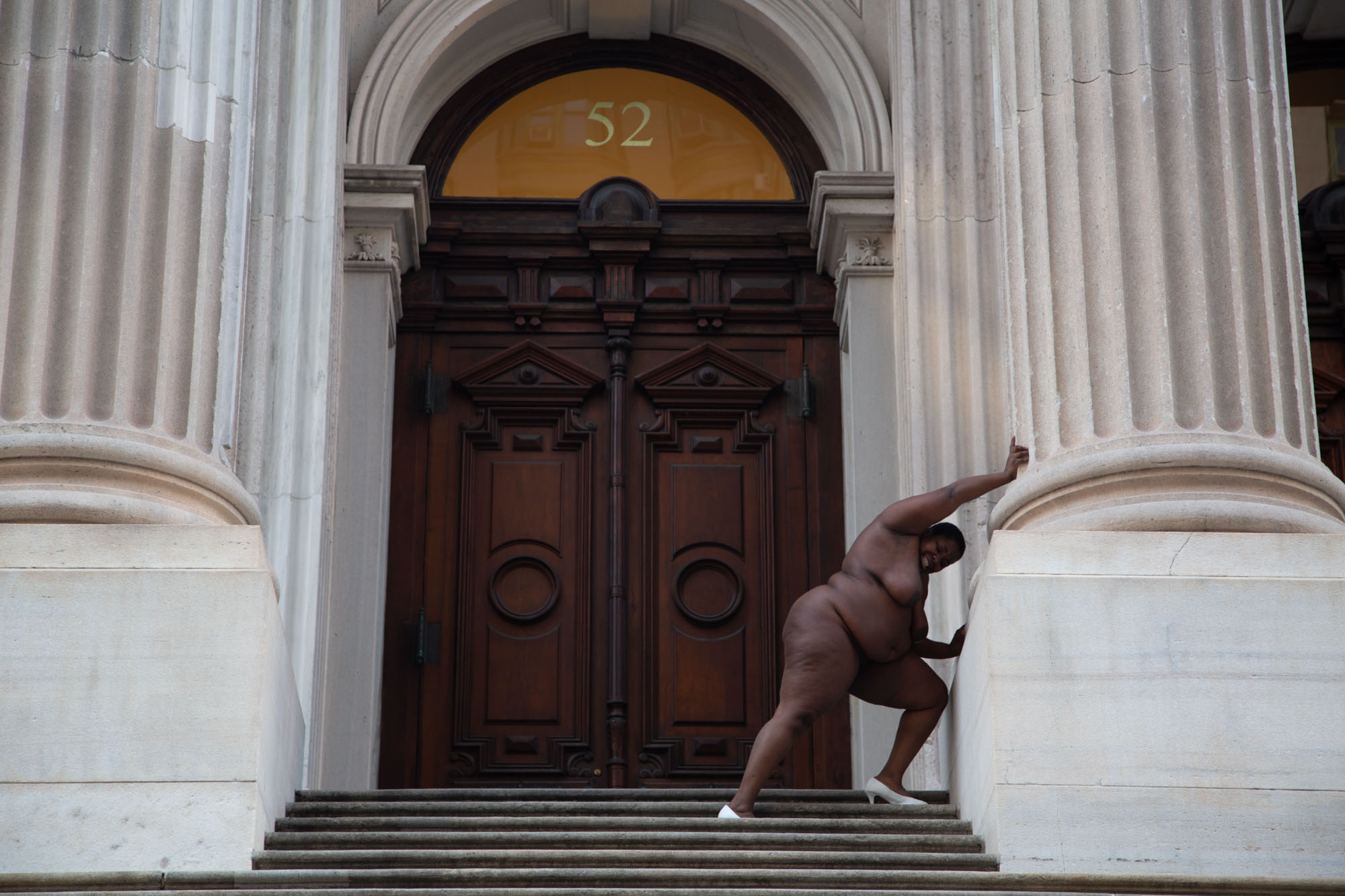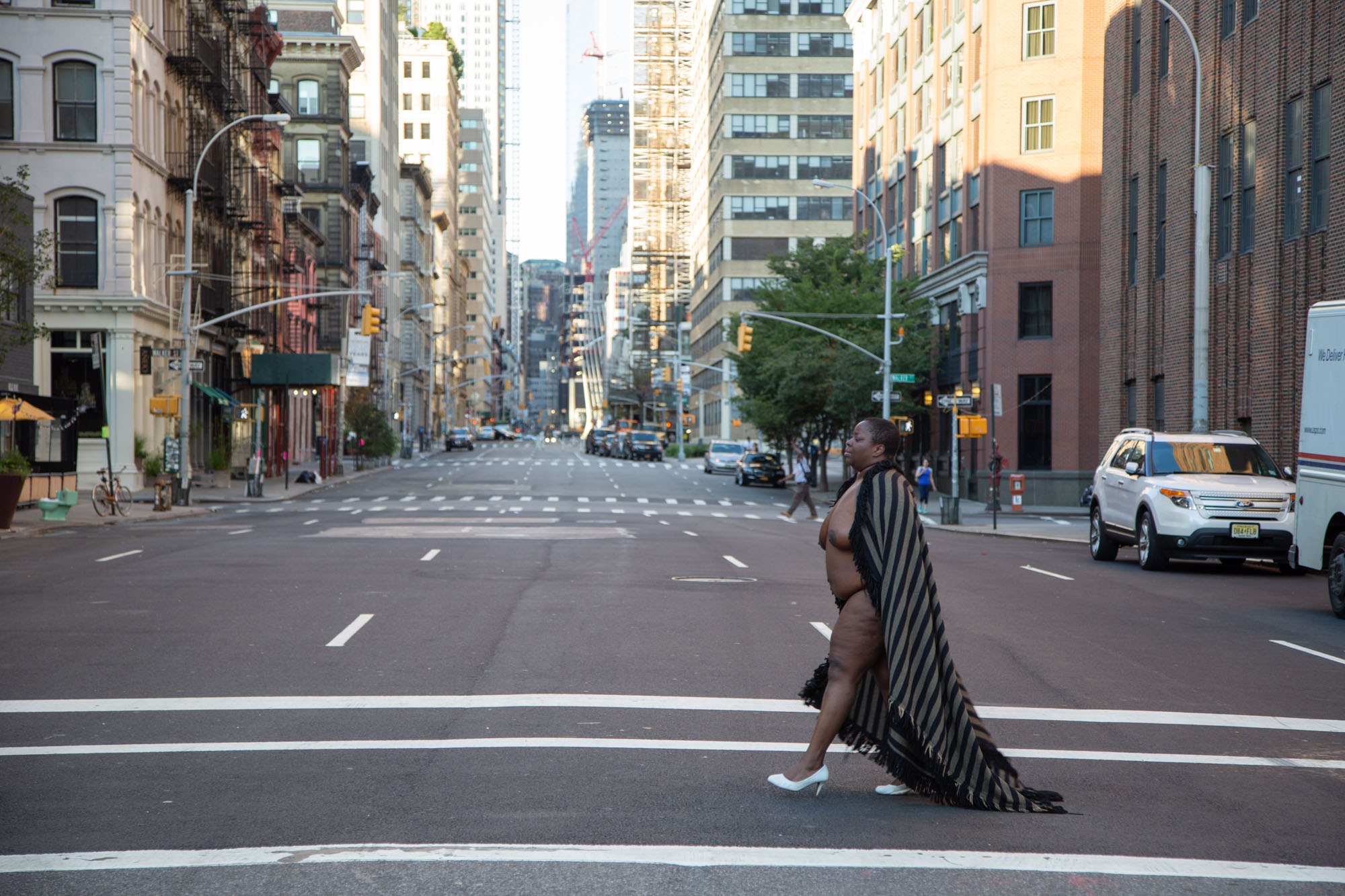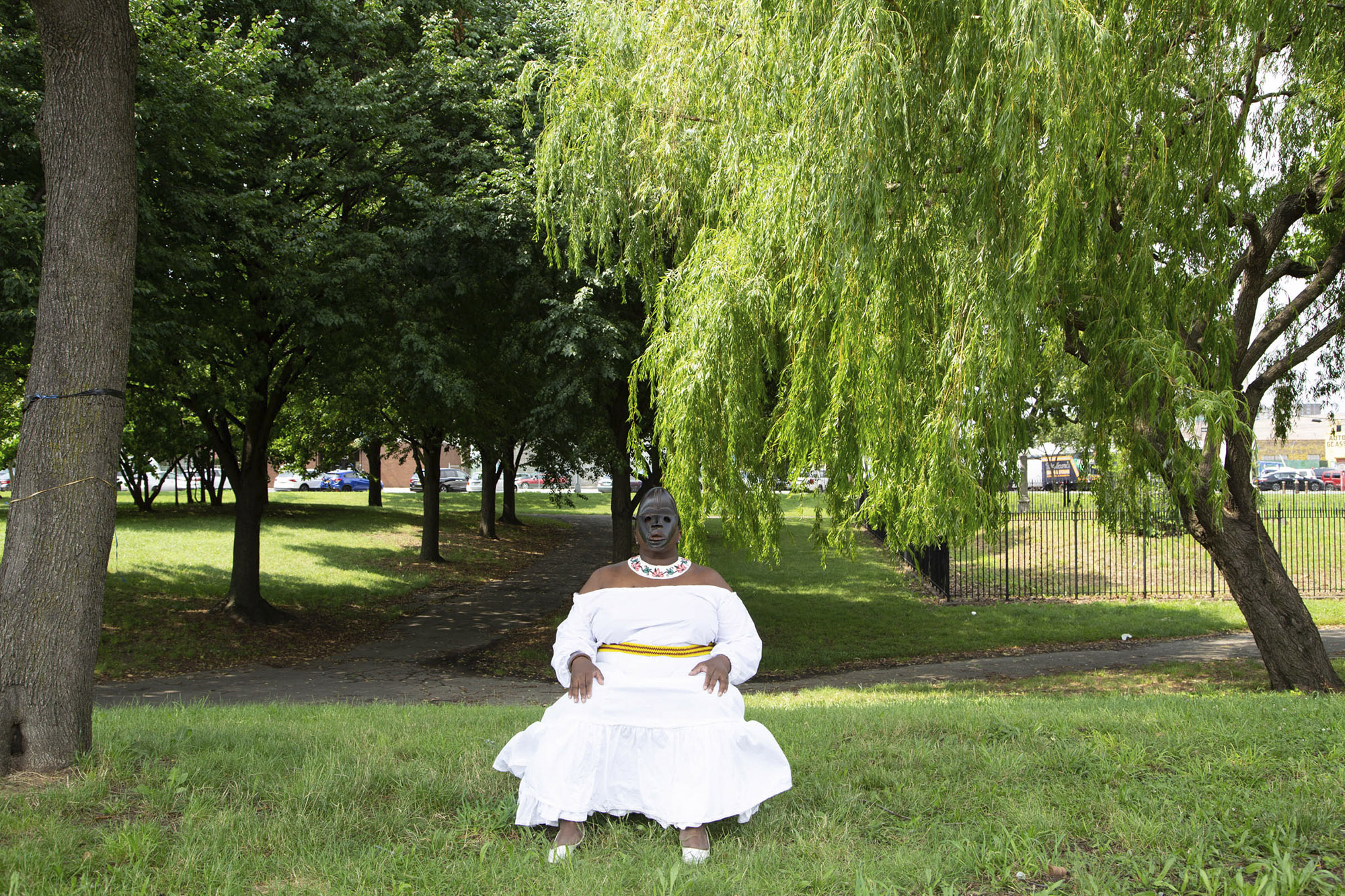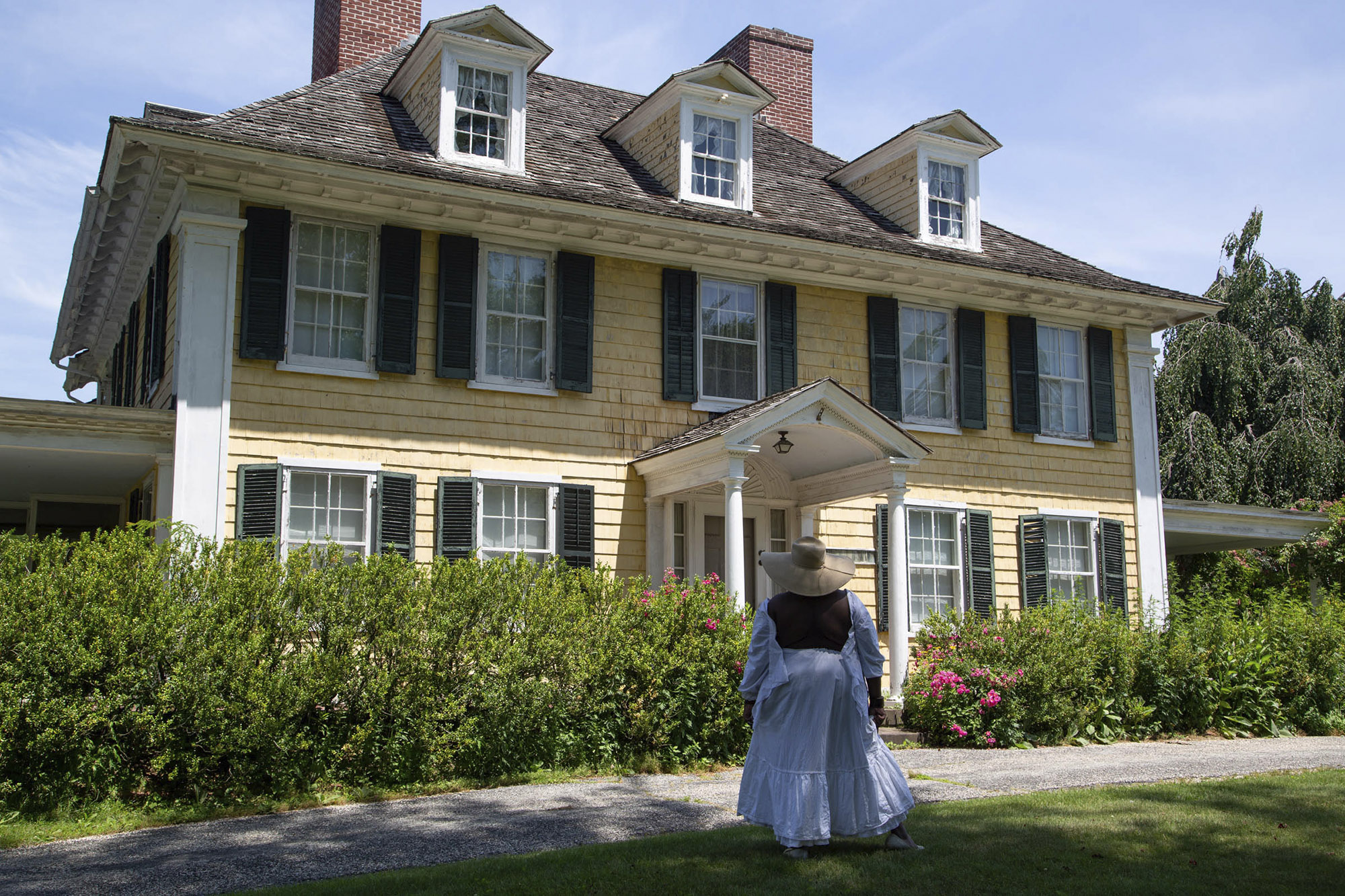
In her white shoes, New York-born Nona Faustine walks around her home city. She is visiting once blameless sites – from Prospect Park, to Harlem and Wall Street – which later left legacies of enslavement, horror and resilience.
Faustine has taken more than 40 self-portraits at these sites, currently on show at Brooklyn Museum. Often naked, both vulnerable and powerful, she frames herself against Lower Manhattan’s African Burial Ground or against the slave-owning sites in Brooklyn, in photographs frequently captured by her sister in the early morning, or at weekends when the city is quiet. In her white shoes, the links to colonialism and assimilation are stark in every image.

Titled White Shoes, the series and eponymous exhibition, ‘capture the historical amnesia of New York City, a city much like the rest of the country that has not fully reckoned with its past,’ says Faustine. ‘I am a conduit travelling through space and time, in solidarity with people whose names and memories have been lost but are embedded in the land.’
‘Nona's presence throughout the White Shoes series centres the project on the experiential engagement of a Black woman artist living in 21st-century New York City,’ says Catherine Morris, Sackler Senior Curator at the Brooklyn Museum’s Elizabeth A Sackler Center for Feminist Art. ‘The White Shoes project is a lesson in history (including a lesson about how history is taught, or not taught); it is also a personal rumination on landscape as both an art historical trope and as a site of complex encounters (with places that typically do not share their secrets), and finally, it is a personal exploration on the part of an artist who is brave enough to unapologetically insert her (often nude) body into an indefatigable contemporary city in order to talk about the effects of the past.’

Morris adds: ‘I think Faustine's use of narrative in the series is actually complex because, while White Shoes is obviously a series and is largely laid out chronologically, the artist has very carefully conceived each photograph as an individual work of art. Each work tells a story about the history of enslavement in the greater New York area. Each photograph stands as a record and as a contemporary acknowledgement of a story that may no longer be visible, or was long hidden, but that has played a part in making the city today what it is. In addition, there is no [single] overall narrative; Faustine has laid the [photographs] out in a specific order, but the viewer can enter the narrative at any given image and follow their own path of interest through the whole.’
‘Nona Faustine: White Shoes’ until 7 July 2024 at Elizabeth A Sackler Center for Feminist Art, 4th Floor, at Brooklyn Museum
Check our round-up for more New York art exhibitions to see this summer








